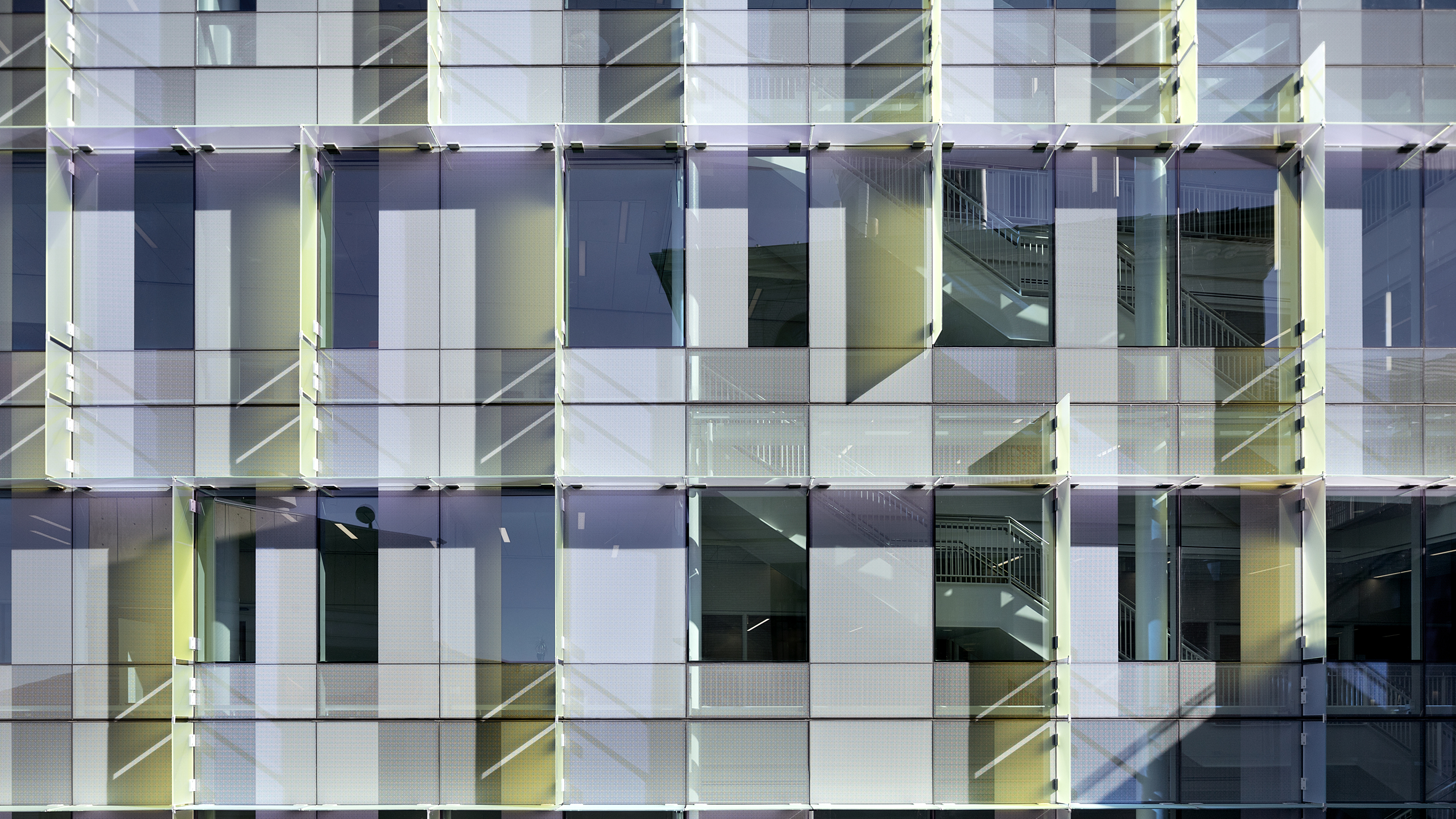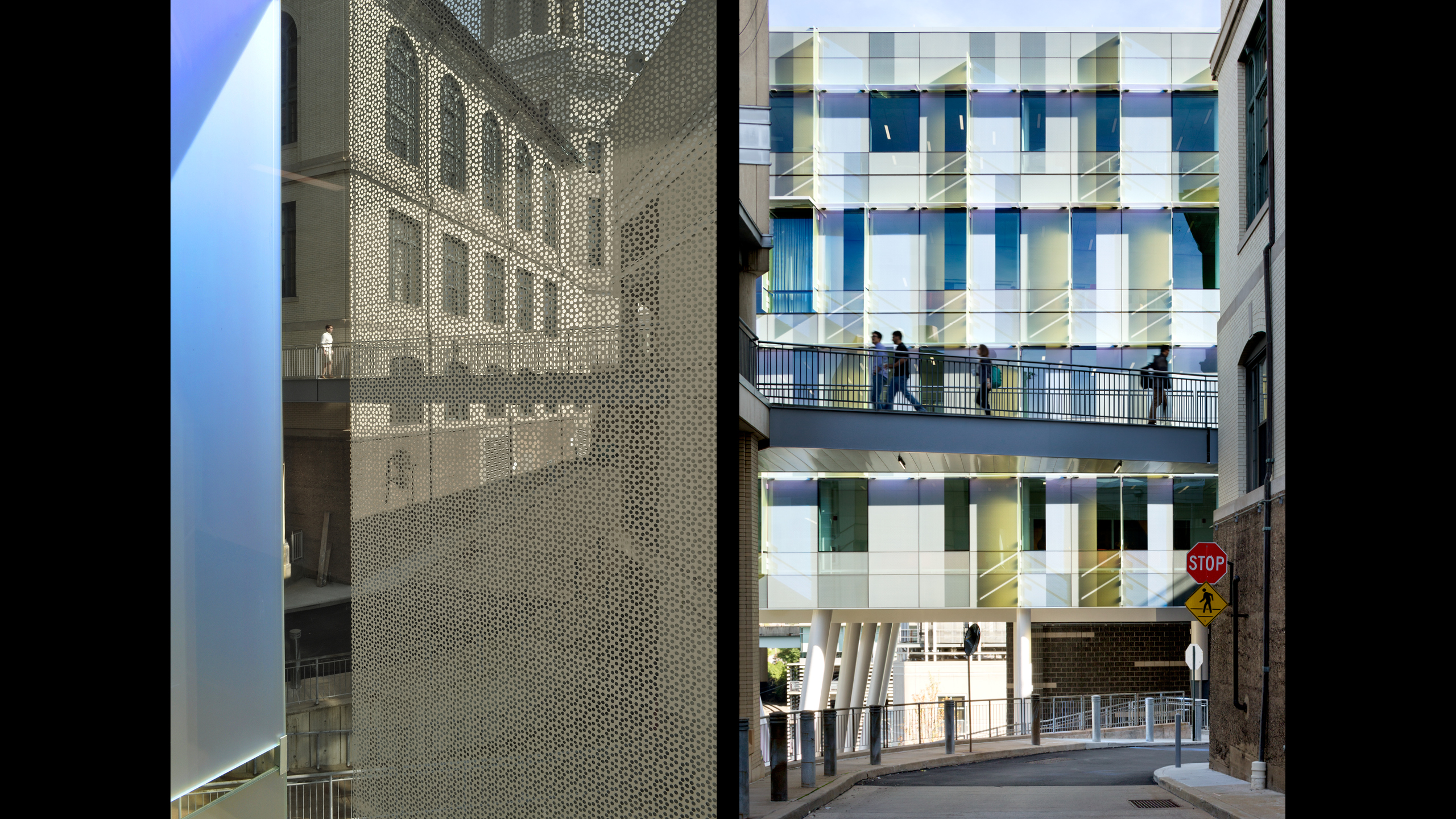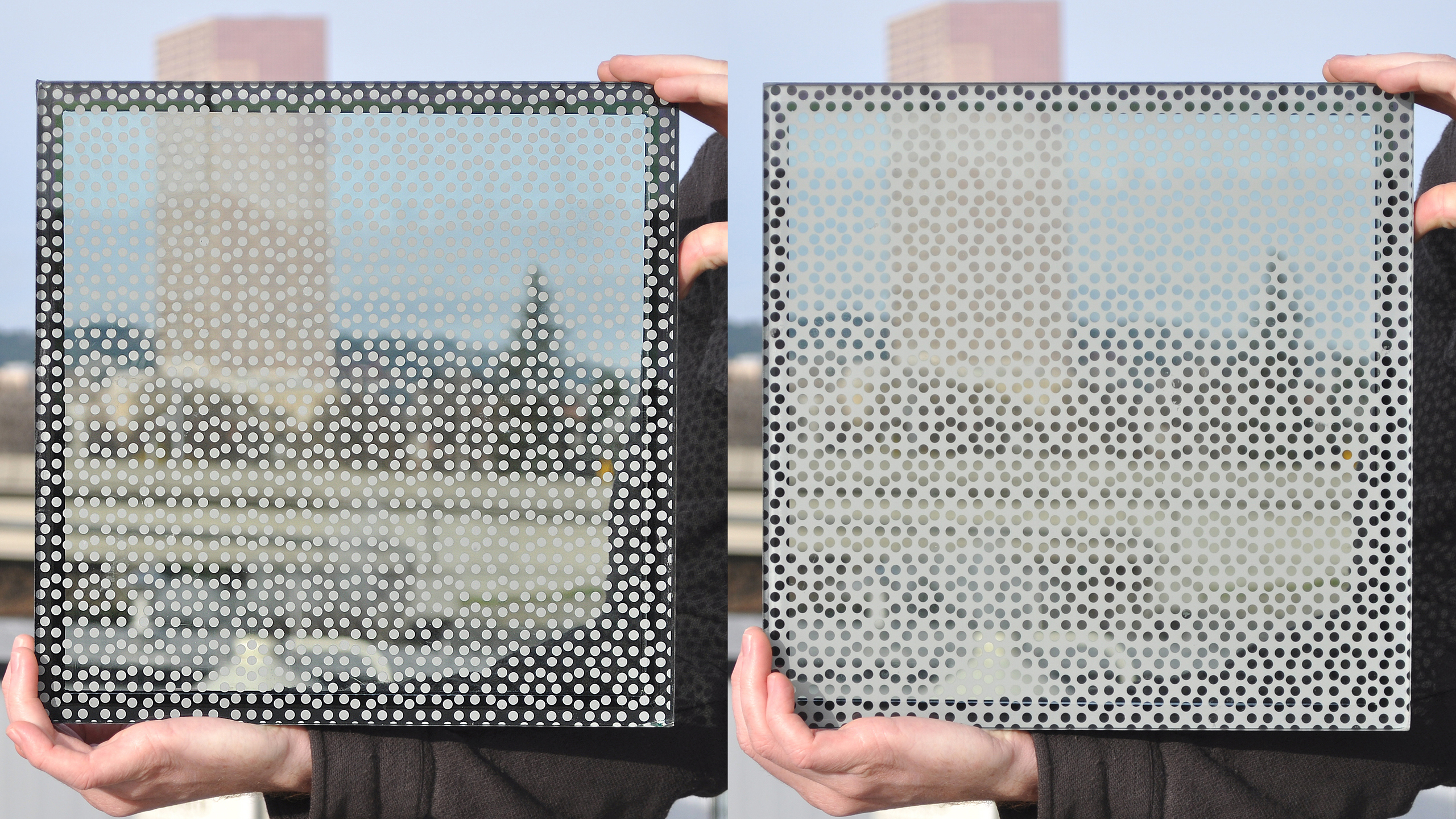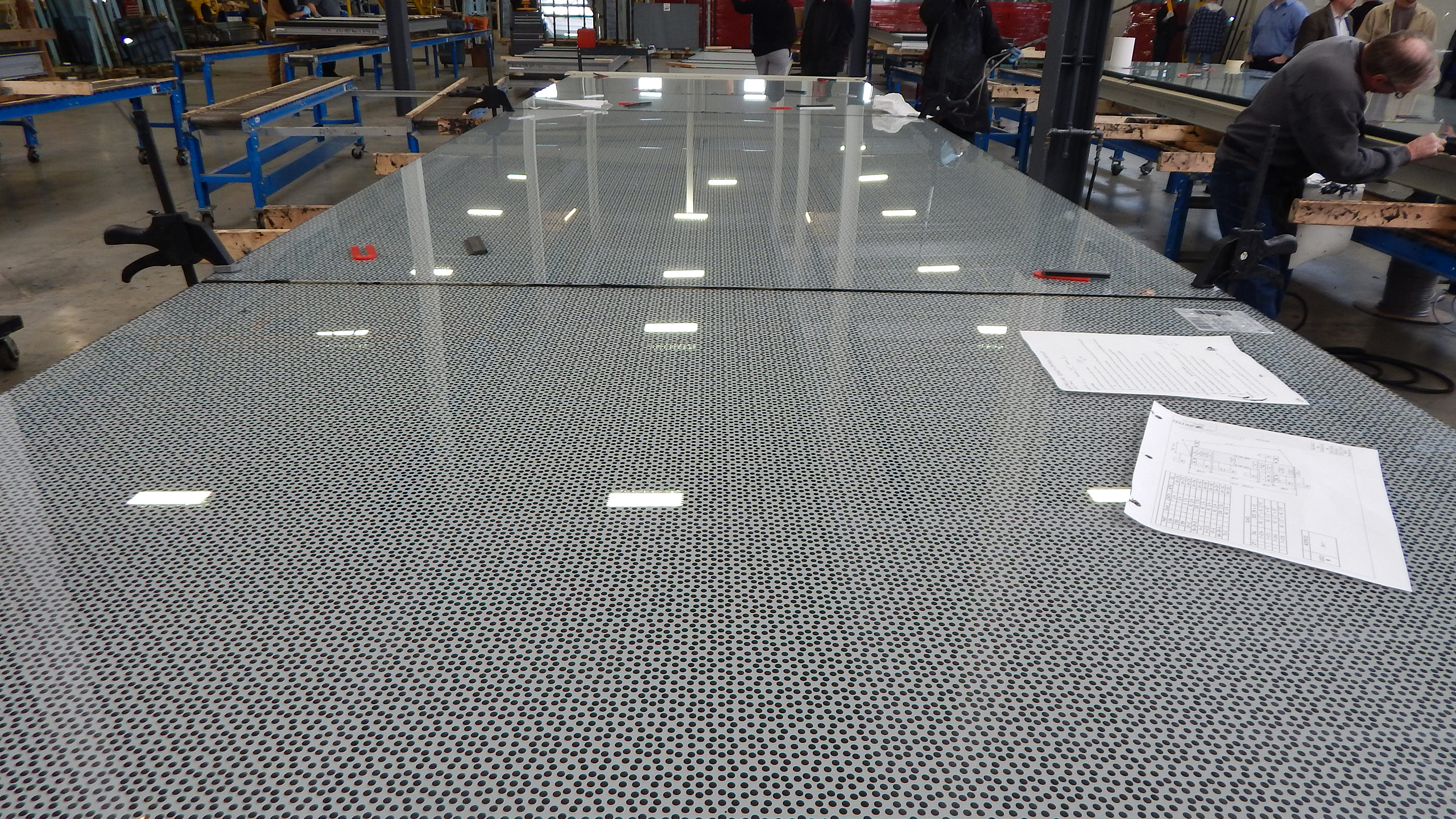Materials Technology R&D: Nanoscience and Bird-Friendly Design
Client: Carnegie Mellon University
Location: Pittsburgh, PA
Type: Higher Education, Interdisciplinary Teaching and Research
LEED Gold Certified
OFFICE 52’s custom design of the ceramic frit for the curtainwall at Scott Hall is an abstract geometric representation of a mathematical and microscopic nanoscience concept based on photonic quasicrystals, which influences optical transmission and reflectivity. When one is close-up to the curtainwall glass in Scott Hall, one sees a different geometric pattern than when one is at a greater distance from the glass. This is due to the fact that the ceramic frit was applied in a dot pattern on the curtainwall, and the perceived change in scale of the photonic pattern has a similarity to nanoscale particles and quantum physics whereby materials and their particles look and behave differently at different scales.
Carnegie Mellon University is one of the premier research institutes at the forefront of advanced nano-technology and complex engineered systems. For the new building, we focused on the research and work from interdisciplinary programs that will be housed in the new building. These include the College of Engineering, the Scott Institute for Energy Innovation, the Disruptive Health Technology Institute, Biomedical Engineering, and the Institute for Complex Engineered Systems (ICES). These programs have a focus on nanotechnology at various levels. The concept of scale in nanotechnology and our in-depth visual research led to a custom design appropriate for the building. Nano is from the Greek word ‘nanos’, meaning dwarf, and is a prefix in the SI measurement system (nanometer) that means 10 to the negative 9, or one billionth. Just as with volumetric space, it is about an understanding of scale.
Ceramic frit is analogous to a ceramic glaze for glass and is comprised of minute glass particles, pigment and a medium. The frit is applied by silkscreen print, digital printer or roller to the uncoated monolithic glass, which is then heat strengthened to fuse the frit to the glass. Placed on the #2 surface of the insulated glass unit, the custom ceramic frit acts a sun-shading device and mitigates glare and heat gain. The frit is also an important bird-friendly design component in that it acts as a bird collision deterrent since birds cannot decipher or see a clear plane of glass and works in conjunction with the dichroic glass, another bird-friendly feature.
In our custom application, the fabrication process represents a union of modern technology and the craft of traditional printmaking techniques. For the curtainwall at Scott Hall, we used a dot pattern for the frit to enhance the visual abstraction of the scientific data into a simplified geometry. We completed a sketchbook series of nanotechnology concepts, and from a range of options, we built laser-cut mock-ups in Portland and Pittsburgh and worked with the University to choose a geometric concept that could be universally applied on the curtain wall.
Our design for the frit pattern explores the concepts of light and scale, and the perception of the pattern changes with the light and one’s location. Up-close as a pedestrian, one can see the individual geometric forms that compose the abstracted photonic nano-pattern. Further away, at the scale of the automobile or as passersby on the nearby bridge, our design is read as semi-transparent fields of horizontal and vertical bands of two densities. The dimensions of the bands change as one moves from the south to the north elevation, and their dimensions are related to the vertical and horizontal proportions of the architectural elements of the adjacent buildings that form Hornbostel Mall. The design is thus a metaphor for the disciplined combination of tradition and innovation inherent in Carnegie Mellon’s interdisciplinary philosophy.
Photography by Jeremy Bittermann and OFFICE 52 Architecture (Isaac Campbell, Michelle LaFoe).
recognition:
The Architect’s Newspaper Glass Edition
archpaper.com Feature Case Study
Urban Glass Feature Article
Link to Scott Hall project



